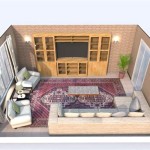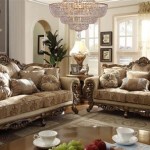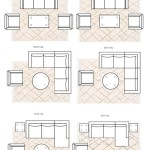Living Room Floor Tile Ideas: A Comprehensive Guide
The living room serves as a central gathering space within the home, often reflecting personal style and accommodating diverse activities. Selecting appropriate flooring is crucial, contributing to both the aesthetic appeal and functional performance of the room. Tile flooring presents a durable and versatile option, available in a wide array of materials, colors, and patterns, allowing homeowners to tailor their living room to specific needs and preferences. This article explores various living room floor tile ideas, providing information to guide informed decision-making during the selection process.
Understanding Tile Material Options
The composition of floor tiles significantly impacts their durability, maintenance requirements, and overall aesthetic. Several material options are commonly used for living room flooring, each with distinct characteristics.
Ceramic Tile: Ceramic tiles are crafted from clay that is fired at high temperatures. They are a cost-effective option and generally resistant to scratches and staining. Ceramic tiles are often glazed, providing a protective layer that makes them water-resistant. This material is available in a wide range of colors, sizes, and designs, allowing for diverse aesthetic possibilities. However, ceramic tiles can be prone to chipping and may be less durable than other options, particularly in high-traffic areas. The lower density of ceramic tile compared to porcelain often makes it lighter and easier to install, but it also translates to a higher water absorption rate, making it less ideal for areas with high moisture exposure.
Porcelain Tile: Porcelain tiles are a type of ceramic tile but are manufactured using a denser clay and fired at even higher temperatures. This process results in a tile that is significantly harder, more durable, and less porous than standard ceramic tile. Porcelain tiles exhibit superior resistance to scratches, stains, and water absorption, making them suitable for high-traffic areas and environments with potential moisture exposure. Porcelain tile also offers a wide range of styles, including those that mimic natural stone, wood, and concrete. While offering superior performance, porcelain tiles are generally more expensive and can be more challenging to install due to their density and weight. The through-body porcelain tile ensures that the color and pattern run through the entire thickness of the tile, which is beneficial as chips are less noticeable.
Stone Tile: Natural stone tiles, such as granite, marble, slate, and travertine, offer a luxurious and unique aesthetic. Each stone tile possesses natural variations in color, pattern, and texture, creating a distinctive look. Stone tiles are highly durable and can withstand heavy foot traffic. However, they often require regular sealing to protect against stains and moisture. Different types of stone require specific cleaning products to avoid damage. Marble, for instance, is susceptible to etching from acidic substances. Granite provides excellent durability, while slate offers a textured, slip-resistant surface. The cost of stone tile can vary significantly based on the type of stone, its quality, and its availability.
Quarry Tile: Quarry tile is made from a mixture of shale, clay, and other natural materials. It's known for its exceptional durability and slip resistance, making it a suitable option for high-traffic areas and spaces where safety is a concern. Quarry tile is typically unglazed and has a rustic appearance. The color palette is usually limited to earth tones, such as red, brown, and gray. Quarry tiles are highly resistant to water and stains, often requiring minimal maintenance. The thickness and density of quarry tile contribute to its durability, but also make it more challenging to install.
Glass Tile: Glass tiles can add a modern and vibrant touch to a living room. They are available in a wide array of colors, shapes, and sizes. Glass tiles are non-porous and resistant to stains, moisture, and mold. They are typically used as accent tiles or in smaller areas due to their higher cost and relative fragility compared to other tile options. Glass tiles can be translucent or opaque, creating different visual effects. The reflective nature of glass can also brighten a room and make it appear larger. Proper installation is crucial to prevent cracking and ensure a smooth, even surface. Choosing the right adhesive is also important to prevent visibility through the glass tile.
Exploring Design Style and Pattern Options
The aesthetic impact of living room floor tiles extends beyond the material itself. Various design styles and patterns can be employed to create specific visual effects and complement the overall decor of the room.
Wood-Look Tile: Wood-look tile, typically made from porcelain, provides the aesthetic appeal of hardwood flooring with the durability and water resistance of tile. These tiles are available in a wide range of wood species, colors, and plank sizes, mimicking the appearance of natural wood grain. Wood-look tile is a practical choice for living rooms where hardwood might be susceptible to damage from moisture or heavy foot traffic. The installation patterns can also replicate the look of traditional hardwood flooring, such as herringbone or staggered patterns. The grout lines can be minimized to further enhance the wood-like appearance. Choosing a textured wood-look tile can also add to the realism and provide better slip resistance.
Large-Format Tile: Large-format tiles, typically exceeding 12 inches in any dimension, offer a contemporary and seamless look. These tiles minimize grout lines, creating a cleaner and more spacious feel. Large-format tiles are available in various materials, including porcelain, ceramic, and stone. The installation of large-format tiles requires a perfectly level subfloor to prevent cracking and ensure a uniform surface. The fewer grout lines also reduce the amount of maintenance required. The large size of the tiles can make a room feel larger and more open. These tiles work well in modern and minimalist living room designs.
Patterned Tile: Patterned tiles, featuring intricate designs or geometric shapes, can add visual interest and personality to a living room. These tiles are available in various materials and colors, allowing for diverse aesthetic expressions. Patterned tiles can be used to create a focal point or to define specific zones within the room. Victorian-style patterns, geometric designs, and Moroccan-inspired motifs are popular choices. The layout of patterned tiles requires careful planning to ensure a balanced and visually appealing design. The grout color should complement the pattern and enhance the overall aesthetic. Using bolder patterns can create a more vibrant and energetic atmosphere in a living room.
Mosaic Tile: Mosaic tiles consist of small pieces of tile, typically less than 2 inches square, arranged in a pattern. Mosaic tiles can be made from various materials, including glass, ceramic, stone, and metal. They are often used as accent tiles or to create intricate designs. Mosaic tiles are versatile and can be used to add texture, color, and visual interest to a living room. The installation of mosaic tiles requires precision and attention to detail to ensure a smooth and even surface. Mosaic tiles can be used to create borders, backsplashes, or entire floor coverings. The grout color can significantly impact the overall appearance of mosaic tiles, either blending in or creating contrast.
Geometric Tile: Geometric tiles offer a modern and structured aesthetic. These tiles are typically in shapes like squares, rectangles, triangles, hexagons or other polygonal forms. They can be arranged in various patterns to create visual interest and a contemporary feel. Geometric tiles are popular for creating bold and eye-catching designs. The use of contrasting colors can enhance the geometric patterns. Geometric tiles can be made from various materials, including porcelain, ceramic, and stone. They work particularly well in minimalist and contemporary living room designs. The size and scale of the geometric patterns can be adjusted to suit the size of the room and the desired aesthetic.
Considering Practical Factors for Tile Selection
Beyond aesthetics, several practical factors should be considered when selecting living room floor tiles. These factors impact the long-term performance, maintenance requirements, and overall suitability of the flooring.
Durability and Traffic: The durability of floor tiles is essential, particularly in high-traffic areas such as the living room. Porcelain tiles are generally the most durable option, followed by stone and quarry tiles. Ceramic tiles are suitable for areas with moderate traffic. The Porcelain Enamel Institute (PEI) rating system provides a measure of a tile's resistance to abrasion and wear. A higher PEI rating indicates greater durability. The frequency of use and the presence of pets or children should be considered when selecting the appropriate durability level. Opting for a more durable tile can reduce the need for replacement or repair in the long run.
Maintenance and Cleaning: Different tile materials require varying levels of maintenance and cleaning. Porcelain and ceramic tiles are generally easy to clean with regular sweeping and mopping. Stone tiles may require sealing and specialized cleaning products. Grout lines can be prone to staining and require periodic cleaning or sealing. Choosing a darker grout color can help to conceal stains. Selecting tiles with a smooth surface can also simplify cleaning. Regular maintenance can prolong the life of the tiles and maintain their appearance.
Slip Resistance: Slip resistance is an important safety consideration, especially in households with children or elderly individuals. Tiles with a textured surface or a higher coefficient of friction (COF) provide better slip resistance. Quarry tiles and some types of stone tiles inherently offer good slip resistance. Applying a slip-resistant coating to existing tiles can also improve safety. The American Society for Testing and Materials (ASTM) provides standards for measuring the slip resistance of flooring materials. Choosing tiles with adequate slip resistance can help to prevent accidents and injuries.
Budget Considerations: The cost of living room floor tiles can vary significantly based on the material, size, design, and installation requirements. Natural stone tiles are typically the most expensive, followed by porcelain and specialty tiles. Ceramic tiles are generally the most affordable option. Installation costs can also vary depending on the complexity of the project and the expertise of the installer. Obtaining multiple quotes from different contractors can help to ensure a competitive price. Considering the long-term cost of maintenance and replacement can also inform the budget decision. Investing in a higher-quality tile can potentially save money in the long run due to its increased durability and reduced maintenance requirements.
Underfloor Heating Compatibility: If considering underfloor heating, it's crucial to choose tiles that are compatible with this system. Porcelain and ceramic tiles are excellent conductors of heat and are well-suited for underfloor heating. Stone tiles can also be used, but their thermal conductivity may vary. The thickness of the tiles can impact the efficiency of the heating system. Thinner tiles tend to heat up faster and distribute heat more evenly. Consulting with a qualified installer is essential to ensure proper installation and compatibility with the heating system. The type of underfloor heating system (electric or hydronic) can also influence the choice of tile material.

Living Room Floor Tile Ideas A Beginner S Guide To Design Styles Country Floors Of America Llc

Should I Tile My Living Room Floor Ideas

Living Room Tile Flooring Ideas Design Shape

Tile Flooring Trends Designs Ideas For 2024 And Beyond

Top 8 Porcelain Tile Flooring Ideas Modern Living Room Transform Your

Best Tile Flooring For Living Room Lx Hausys

47 Fabulous Floor Tiles Designs Ideas For Living Room

20 Living Room Floor Tile Ideas To Upgrade Your Home Decoist

7 Tips To Select The Best Tiles For Living Room

The Best Living Room Tile Ideas Designs Karara Ceramics








